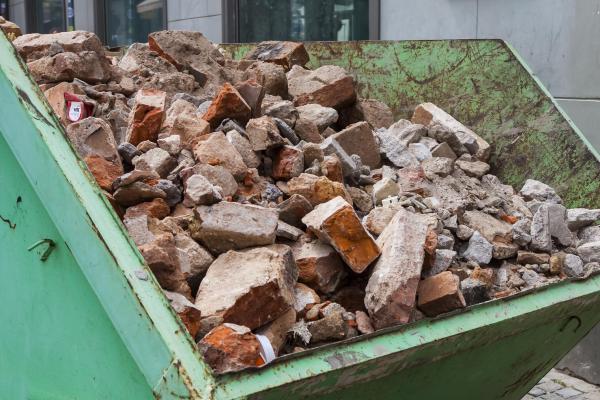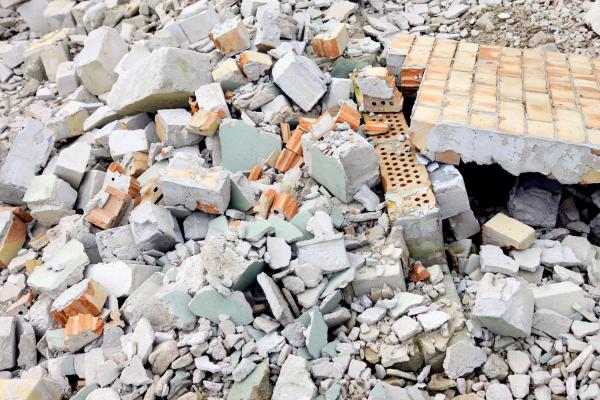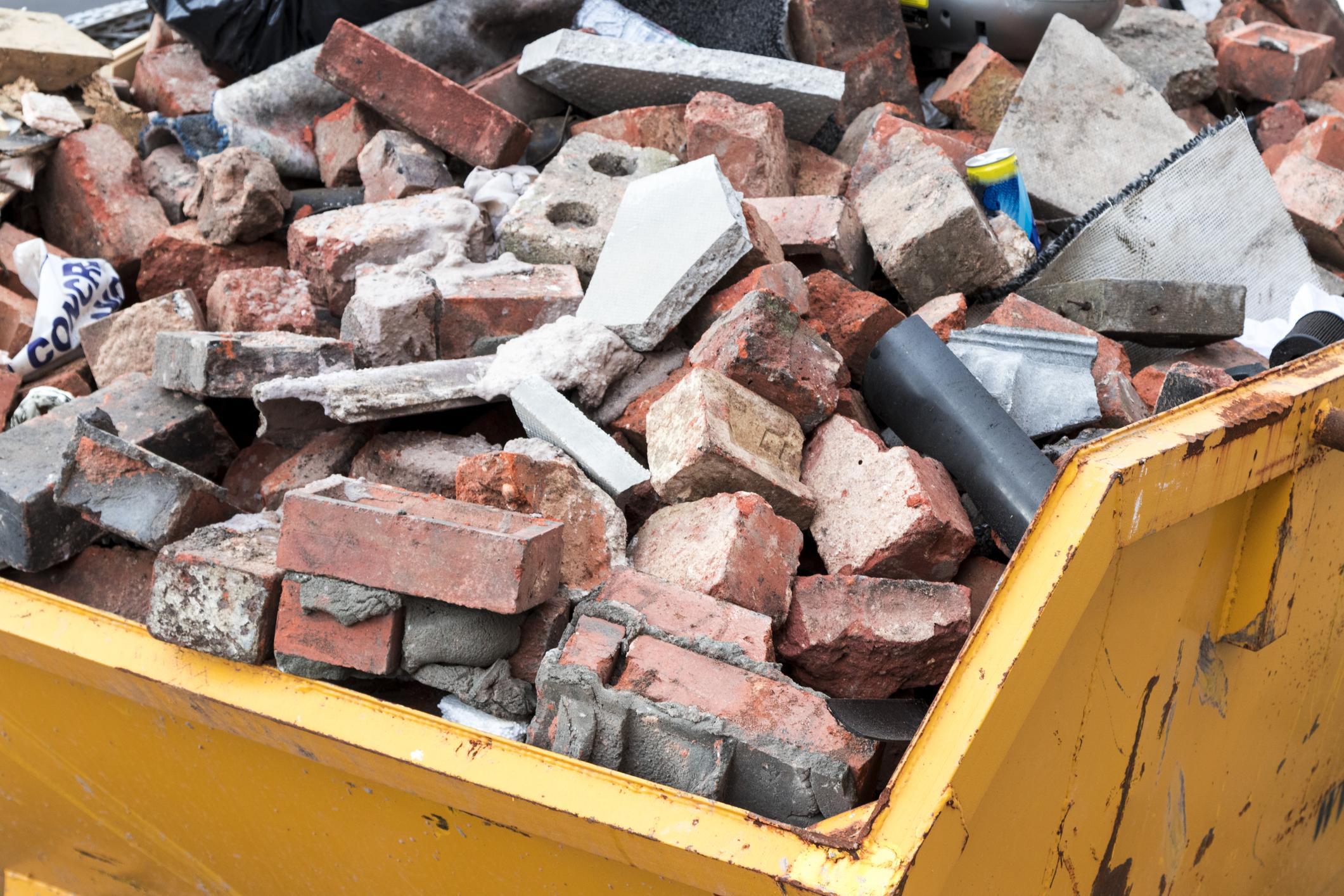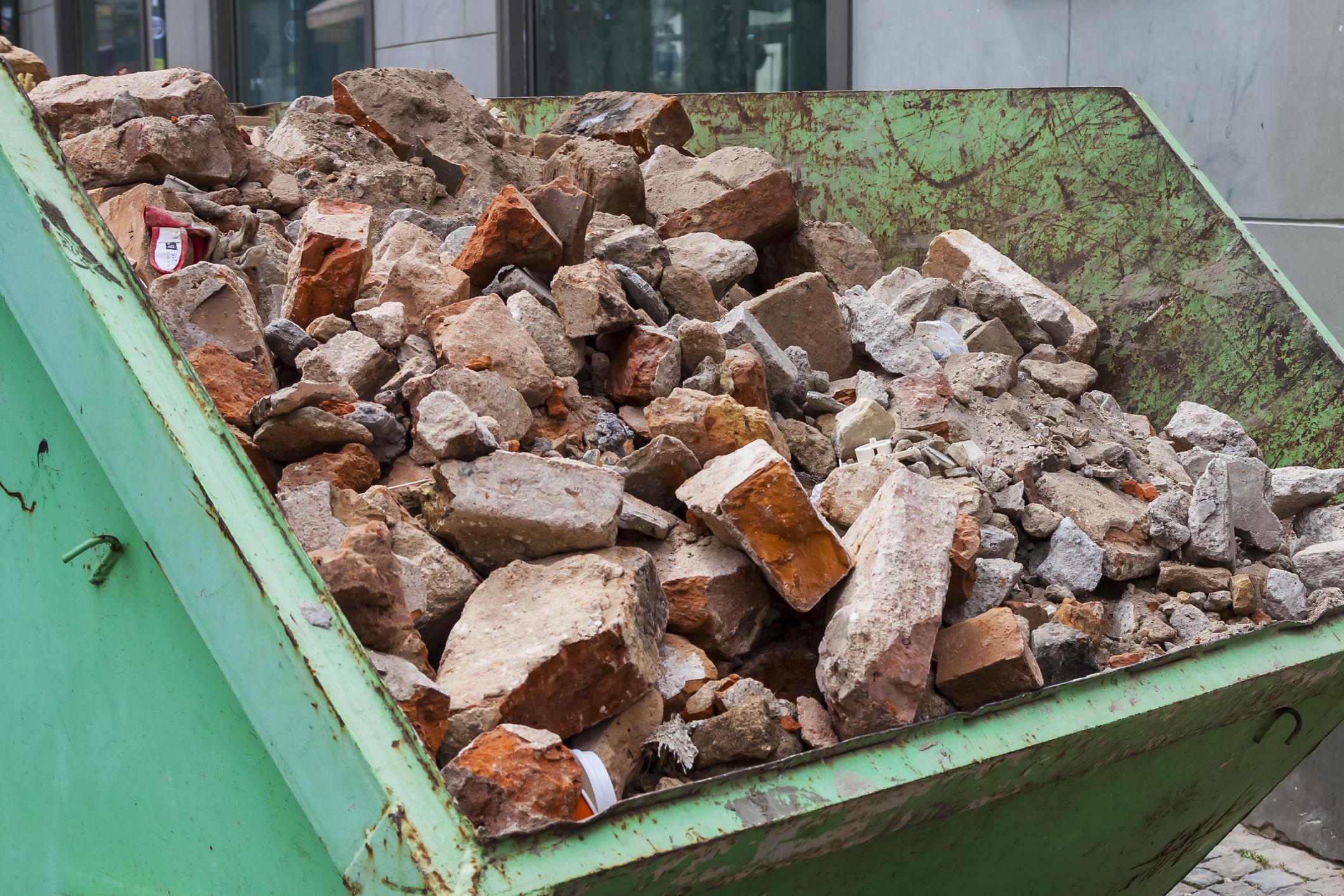How to Get Rid of Bricks and Building Rubble


Getting rid of bricks and rubble requires either disposing or recycling the material. How this is done will depend on the facilities you have in your area, as well as other factors. Whether it is to develop our own skills, to save money or for whatever reason, many of us are doing our own construction and renovation projects. This requires a lot of planning in terms of what materials we need to buy and what provisions we need to make to complete the project. Unfortunately, rubble removal is something which is often overlooked. Since this waste can harm the environment, it is very important we get rid of bricks and rubble safely and ethically.
At thedailyECO, we look at how to get rid of bricks and building rubble for home projects. Whether creating a construction site or doing small renovations, we explain how you can dispose of building rubble properly.
What is rubble?
Strictly speaking, rubble is the word for broken stone which is of irregular size, shape and texture. It can be taken from quarries and other natural sources, but it can also be created during construction and demolition projects. In these cases, the rubble usually contains other building materials, especially bricks. In a more general sense, rubble is the bricks, stone, masonry and other materials which are created when constructing or demolishing buildings.
Other materials which can be included in rubble include concrete, ceramics and wood, although this will depend on the specific project. Before a building is demolished, it is common for the building to be stripped of important and expensive materials. Copper wiring is one common example as it is a material often stolen from construction sites. Plaster, glass and plastic can be included in rubble, although to varying degrees.
Approximately 75% of rubble is usually non-hazardous. This is inert waste which means that it is not a potential risk to the health of the environment or human beings. The remaining 25% can be a combination of other waste, including some toxic or dangerous material that must be discarded.
In the United States, the environmental protection agency (EPA) has set out specific guidelines for sustainable management of construction and demolition materials[1]. One of the main objectives is to use many of these materials again, something that will prevent the need to mine and process new materials. These are requirements for large construction corporations, but they are not always very clear when it comes to residential or small business properties.
However, the same essential process applies to rubble removal for large or small projects. The waste needs to be sorted and managed, with different materials being disposed of appropriately. We can also know how to reuse and recycle certain materials to reduce the environmental impact of our construction or demolition projects.
Learn more about types of rubble with our article on what is solid waste?
Where to dispose of bricks and building rubble
It takes a lot of bricks to construct a building, so you may have much of them in your rubble. Even more you think of rubble removal, it is very important for you to have a plan. If we look at demolition, you will need to have the building assessed so you can have a demolition permit. The officials involved will help you know what materials need to be removed and how to demolish the building properly.
This will involve you stripping the building before destruction. During this process you will start to sort the materials together. Depending on the size of your project, you may need to hire special roll-off dumpsters or skips to get rid of the material. You will need to sort out the different types of rubble as your project progresses. Bricks usually will take up the most space during this process.
Debris containers or roll-off dumpsters
Debris containers are specialized waste dumpsters which are found at various waste points in your city or area. In the UK, they may be at your local dump. In the USA, they are taken to a specialized processing plant where they are weighed and sorted. These plants are usually run by the companies that hire the roll-off dumpsters. You will be charged for the amount you dump, something which varies from region to region.
In addition to your building or demolition permit, you may need a permit to even rent a roll-off dumpster. In most cases, the company from which you hire the roll-off dumpster will deliver and pick up the dumpster for you. You may also be charged for overage fees if your dumpster contains more than your allotted amount.
Landfill points
If your project does not require you to have as much bricks and rubble to require a roll-off dumpster, you may be able to transport the waste yourself. In these cases, you can use the back of a pickup or similar vehicle and store the bricks and rubble. You can then take them to a landfill where they will take the waste and charge you municipal solid waste (MSW) landfill tipping fee. Again, this will vary on location and other factors.

Rubble recycling
It is common for us to ask whether rubble can be recycled. We can recycle other waste material at home and solid waste is no different. Much of the rubble material can be recovered through mechanical processes in which various products suitable for use as raw material are obtained.
There are two main types of rubble, that which can be recycled and that which cannot. Accordingly, they need to be taken to one of two places:
- A rubble recycling plant where waste receives treatment and recovery processes.
- A landfill (final disposal site) where the rubble that cannot be treated is taken. This is usually due to its toxicity or dangerousness.
Thanks to the improvement in the management of said waste, there are more and more options for recycling. These options are cataloged according to material and the waste management site will be able to help you to understand what material can be recycled. This is due to guidelines set out by the EPA and other governing bodies as an attempt to reduce waste.
Learn more about how we can better manage our waste systems with our article on how to protect nature's ecosystems.

Reusing bricks
In addition to recycle your bricks and rubble, it may be possible to reuse them. This will depend on the mode of demolition and the quality of the bricks, but even broken bricks can be reused. Doing so will help you to avoid getting ride of waste needlessly, but it will also help you to save money. You save money by both avoiding fees for landfill, as well as in buying more construction material for other projects.
When you take the bricks after demolition, you will need to sort them into equally sized pieces. Take a chisel and hammer off any mortar which is attached to the bricks. Do so gently so you don't break the brick and further. Now you will have ready-to-use bricks which you can save for other construction projects.
Any odd-shaped or broken bricks can also be reused. We can add build walls or pave walkways with this material by simply creating an uneven pattern and filling the gaps with mortar. This is a process which leads to ‘crazy paving’ and other forms of hard-surfacing.
Learn more about how we can best recycle by looking at our related video on garbage:

If you want to read similar articles to How to Get Rid of Bricks and Building Rubble, we recommend you visit our Recycling and waste management category.
- EPA. (2023). Sustainable Management of Construction and Demolition Materials. Retrieved from:
https://www.epa.gov/smm/sustainable-management-construction-and-demolition-materials







